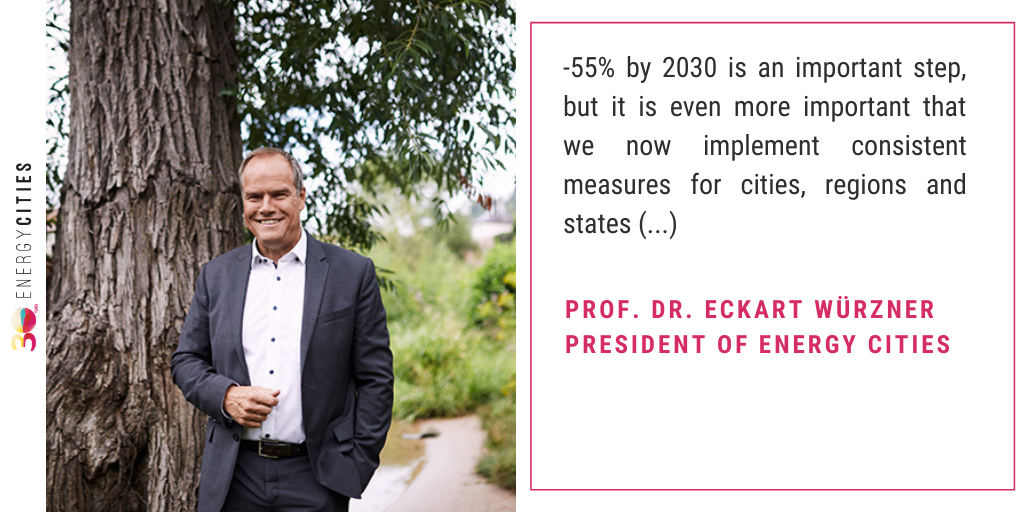The European Commission has formally proposed a target of 55% fewer GHG emissions by 2030, a substantial increase from the previous target of 40%. It hasn’t yet been finalised by the European Parliament and EU Council, but it is likely to be the final target.

More interesting than the target, however, is the impact assessment (Part 1 and Part 2 – careful, they are hundreds of pages long!) and the plan on how to achieve the more ambitious target. Specifically, what does it mean for cities?
The Energy Sector:
A big boost for renewable energy- The plan is to double renewable generating capacity from 32% today to 65% by 2030. There is a substantial opportunity for community energy to fill some of that gap in the next ten years. This will need to be reflected in the review of the Renewable Energy Directive due in June 2021.
More efficiency- Cut final energy consumption by 36-37% for final energy consumption (total energy consumed by end users) and 39-41% for primary energy consumption (total energy used to meet final energy needs, e.g. gas used to produce electricity). Currently the Energy Efficiency Directive calls for -32.5% by 2030, so it too will be revised by June 2021.
Coal says goodbye, gas lingers- Coal is essentially removed by 2030 with a 70% reduction by 2030 from a 2015 base, while oil and gas are reduced more modestly at 30% and 25%.
Buildings and Heating Sector:
Renovation Wave (Due Oct. 14th)- Targeting individual buildings and a district-level approach to increase efficiency and the switch to renewable heating sources. This may include, “mandatory requirements for the worst performing buildings and gradually tightening the minimum energy performance requirements” but no word yet on who or how those minimums would be enforced.
Heating getting hot– The EU Commission call for more focus on local heating and cooling solutions, linking waste heat and renewable energy sources and specifically mentions “modern low-temperature district heating systems”. Members of Energy Cities have a lot of experience in this field and are well-placed to capitalize on its growing importance.
Accelerating Cleaner Mobility:
Zero emissions cars – There isn’t an explicit proposal to phase out fossil fuel cars but the projection is that each KM driven in 2030 will have 50% of the emissions of a car driven in 2021. That is going to require a substantial number of zero emissions vehicles while also reducing the overall fleet size through “sustainable collective transport services.”

Sinking carbon and sharing costs:
Recycle the money- One proposal is to redirect auction revenues from the EU Emission Trading Scheme (ETS) to tackle energy poverty and help poorer households to invest in cleaner technology creating a virtuous circle. They also propose expanding the EU ETS fully cover buildings & transport. This is a very contentious issue we will be watching closely and it is unclear if this would be effective in either sector.
Working the land- The EU Commission hopes that improved forest management and the restoration of wetlands, peatlands and degraded land in line with the Biodiversity Strategy can have a big impact on overall emissions – especially for the 2050 net zero target as there is obviously a long lead time in these types of land use changes. Cities will play an increasingly important role in reforesting areas and maximizing carbon sequestration of existing green spaces.
